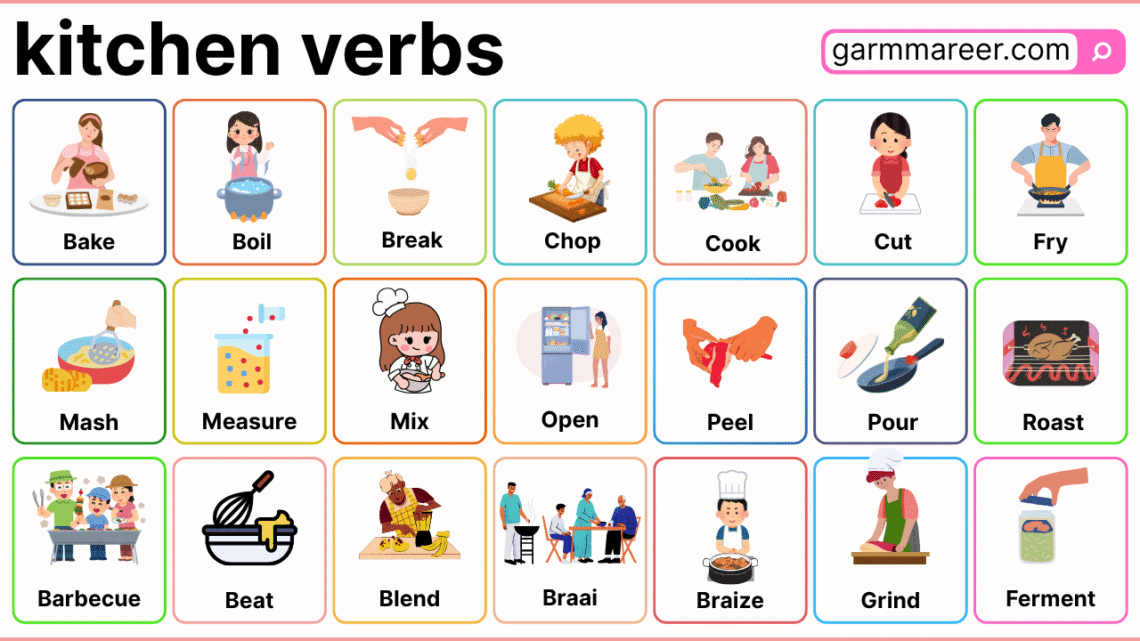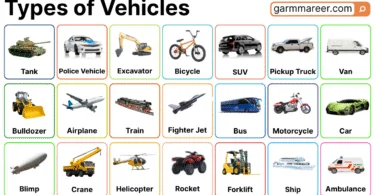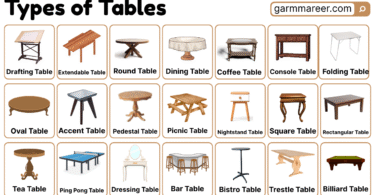Learning kitchen verbs helps you understand and follow cooking instructions easily. These action words show exactly what to do with food and tools in the kitchen. Knowing kitchen verbs saves time and improves your skills when preparing meals. You will also learn through pictures to make these verbs clear and easy to remember.
Table of Contents
Common Kitchen Verbs You Use Every Day
Here is a list of kitchen verbs that are frequently used in cooking and kitchen tasks. These words help you describe how to prepare, cook, and clean effectively.
- Cut: To divide food into pieces using a knife or tool.
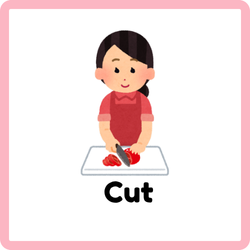
- Fry: To cook food in hot oil or fat.
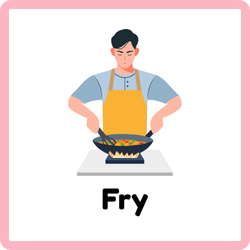
- Cook: To prepare food by heating it.
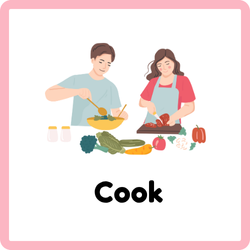
- Grill: To cook food on a grill with direct heat.
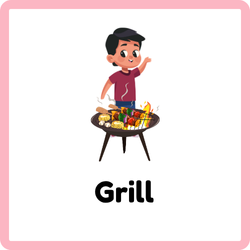
- Bake: To cook food in an oven using dry heat.
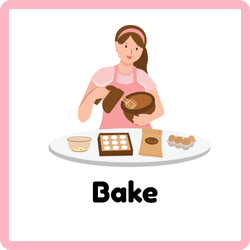
- Boil: To cook food in boiling water or liquid.
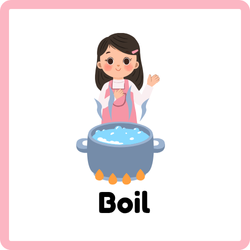
- Break: To separate food into smaller pieces by force.
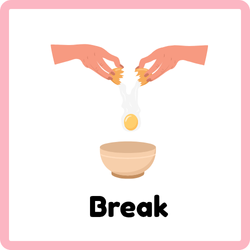
- Chop: To cut food into small, rough pieces.
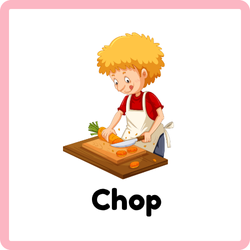
- Slice: To cut food into thin, flat pieces.
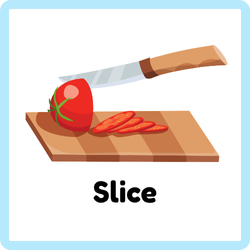
- Stir: To mix ingredients gently using a spoon.

- Roast: To cook food evenly using dry heat in an oven.
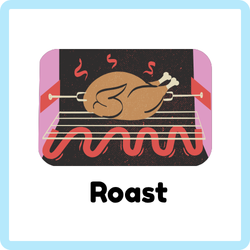
- Taste: To try food to check its flavor.

- Knead: To press and fold dough to make it smooth.
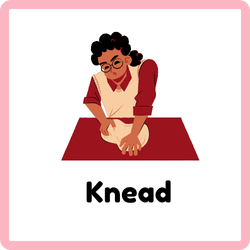
- Mash: To crush food into a soft, smooth mass.

- Heat: To make food warm or hot.
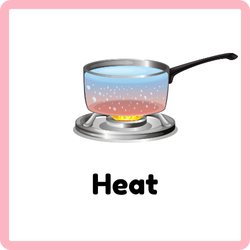
- Measure: To find the exact amount of an ingredient.
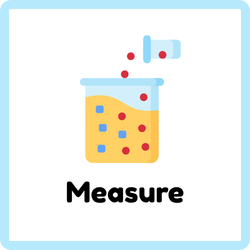
- Open: To remove a cover or lid from food packaging.

- Peel: To remove the outer skin from fruits or vegetables.
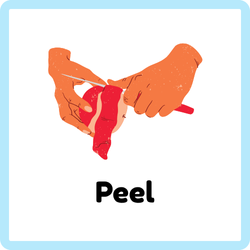
- Mix: To combine different ingredients together evenly.

- Pour: To transfer liquid or food by letting it flow out.
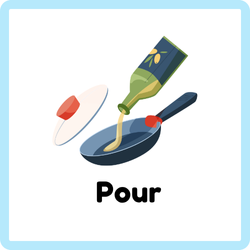
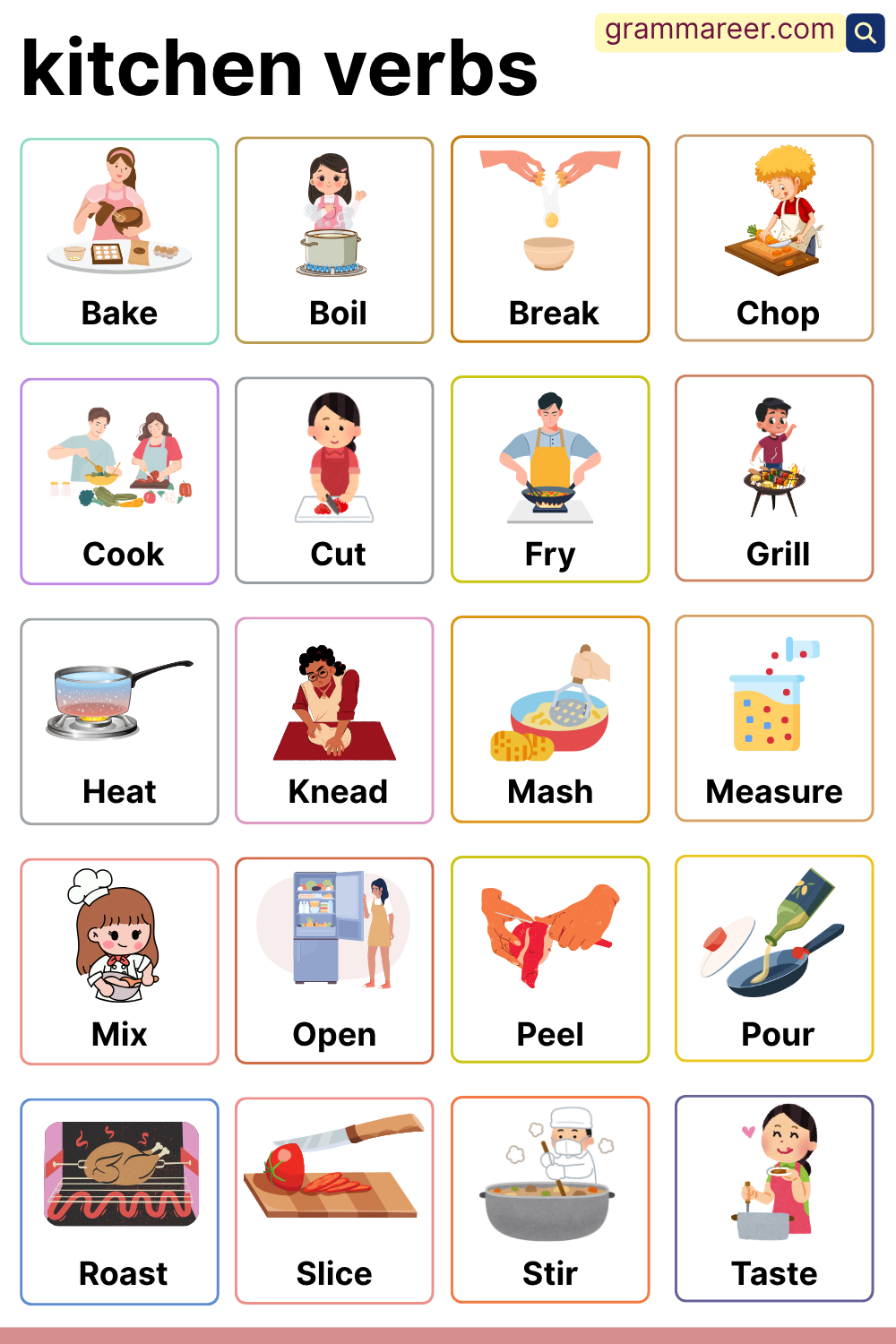
List of Kitchen Verbs with Pictures
Complete list of kitchen verbs with pictures to help English learners understand actions clearly.
- Decorate
- Fold
- Melt
- Simmer
- Chill
- Clarify
- Grind
- Ferment
- Barbecue
- Beat
- Blend
- Braai
- Braise
- Burn
- Carve
- Coat
- Combine
- Crush
- Serve
- Whisk
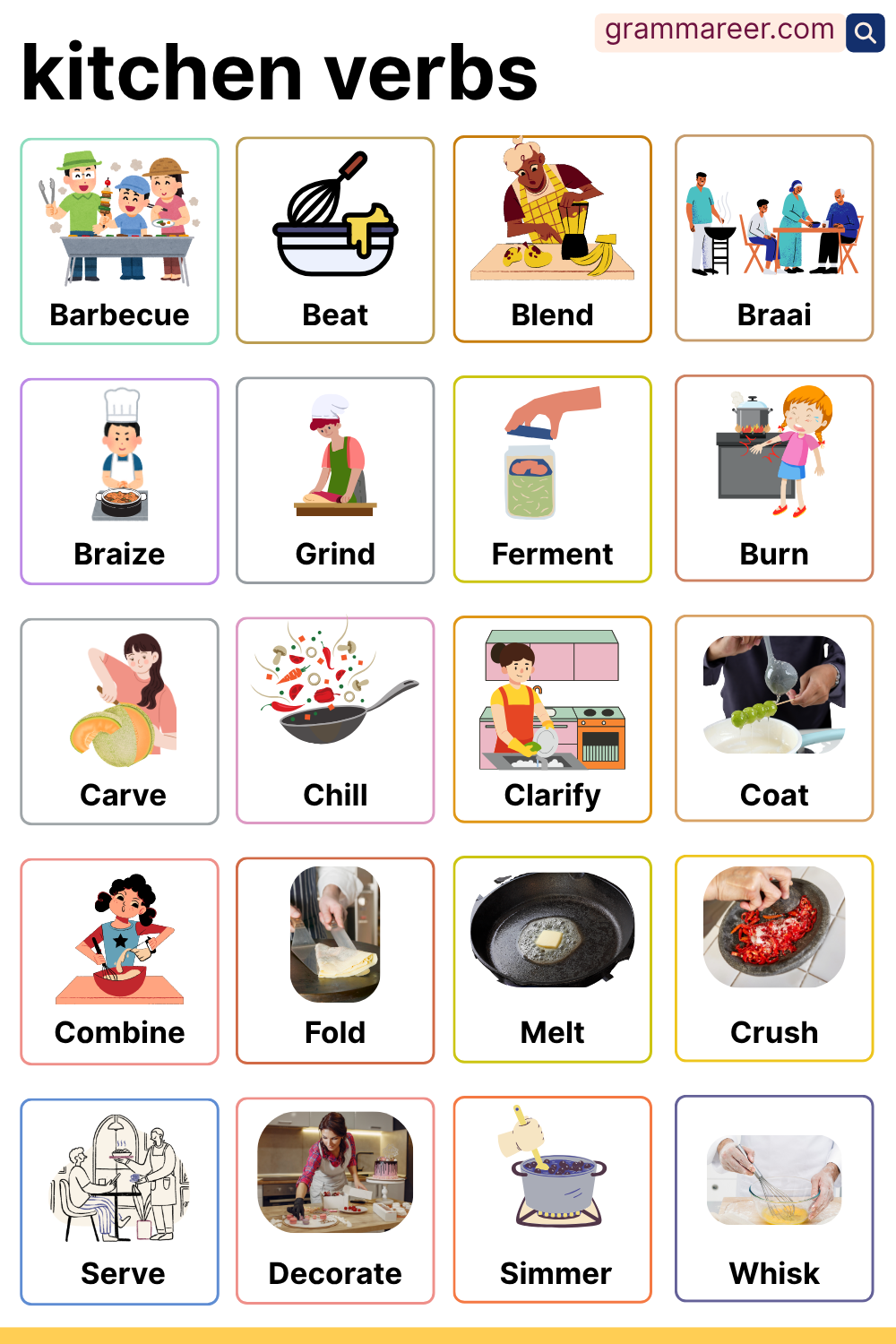
Kitchen Verbs for Beginners to Master
Learning kitchen verbs related to different cooking steps makes cooking easier to follow.
Verbs for Cutting and Preparing Ingredients
- Chop: Cut vegetables or meat into pieces quickly.
- Slice: Make thin cuts on fruits or vegetables.
- Dice: Cut food into small cubes for even cooking.
- Peel: Remove skins like from potatoes or apples.
- Grate: Shred cheese or vegetables into small pieces.
- Crush: Press food to break it, like garlic.
- Mince: Cut food into very fine pieces, often garlic or meat.
Verbs for Mixing and Combining Foods
Discover verbs for mixing and combining foods to boost your English vocabulary. Below is a list with names:
- Mix: Combine ingredients evenly.
- Stir: Move ingredients gently to avoid spilling.
- Whisk: Beat eggs or cream to add air.
- Beat: Mix quickly for smooth texture.
- Fold: Carefully combine soft ingredients like batter or whipped cream.
Verbs for Heating and Cooking Methods
- Boil: Cook food in rapidly bubbling water.
- Simmer: Cook gently just below boiling.
- Fry: Cook food in hot oil.
- Sauté: Quickly fry with a small amount of oil.
- Bake: Cook food in the oven.
- Grill: Cook on a grill with direct heat.
- Roast: Cook in the oven with dry heat and oil.
- Steam: Cook food using steam without direct contact with water.
- Toast: Brown bread or nuts by heating quickly.
Verbs for Serving and Presenting Food
Learn verbs for serving and presenting food to improve your English vocabulary. Here is a list with names:
- Serve: Bring food to the table for eating.
- Plate: Arrange food nicely on plates.
- Garnish: Add decorations like herbs or sauce to food.
- Pour: Transfer liquid into a container or dish.
- Slice (used also here): Cut portions to serve.
Kitchen Verbs in Everyday Recipes
Understanding kitchen verbs used in common recipes helps you cook with confidence.
Baking Action Verbs You Should Know
- Mix ingredients until combined.
- Whisk eggs or cream until fluffy.
- Fold in dry ingredients gently.
- Beat batter for smoothness.
- Bake in a preheated oven until cooked.
Verbs Used for Boiling and Simmering
- Boil water before adding pasta or vegetables.
- Simmer soups or sauces to develop flavor.
- Drain boiled food to remove water.
Frying and Sautéing Verbs Explained
- Fry food until golden and crispy.
- Sauté vegetables quickly in a hot pan.
- Toss ingredients while cooking to mix flavors.
Kitchen Verbs for Cleaning and Organizing
Kitchen verbs are also important for keeping your space clean and neat.
Verbs for Washing Dishes and Utensils
Learn washing verbs for dishes and utensils to improve your English vocabulary.
- Wash dishes with soap and water.
- Rinse to remove soap from dishes.
- Scrub to clean stuck food or stains.
- Dry dishes with a towel or let air dry.
Verbs Related to Kitchen Organization
Explore common kitchen organization verbs and names for better English skills.
- Store food in containers or fridge.
- Arrange utensils or ingredients neatly.
- Label containers for easy identification.
- Dispose of trash or waste properly.
Using Kitchen Verbs in Sentences
Here are a few ways to use kitchen verbs in clear sentences:
- Please chop the onions finely for the sauce.
- She likes to whisk eggs until they are fluffy.
- The recipe says to simmer the soup for 20 minutes.
- After frying, drain the oil from the pan.
- Don’t forget to wash your hands before cooking.
- You should store leftovers in airtight containers.
FAQs about Kitchen Verbs
Kitchen verbs are action words that describe tasks performed during cooking or cleaning in the kitchen.
Kitchen verbs about cutting describe actions like chopping into small pieces, slicing thinly, dicing into cubes, mincing finely, carving meat, and trimming unwanted parts. These help prepare food for cooking.
No, they include preparation, cooking, serving, cleaning, and organizing actions.
Start with verbs like chop, mix, boil, fry, and wash for everyday kitchen tasks.
You May Also Like

